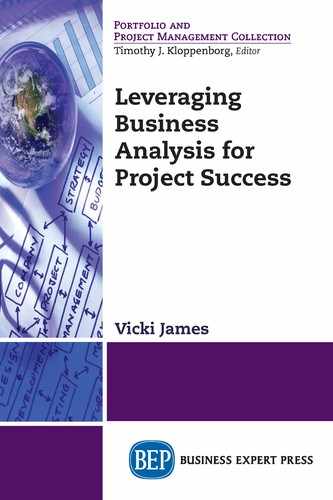Organizations will benefit by having a business analysis community: This is a place where business analysts can learn, grow, and share best practices. There are two recognized terms for such communities, each having a different level of formality and purpose.
Communities of Practice
A Community of Practice is an informal network of business analysis peers. They are often self-organized and held together by a mutual desire to share expertise to help others and gain new knowledge themselves.
Center of Excellence
A Center of Excellence is a more formal body, often the initiative of an organization leader. The Center of Excellence may be resourced with either full- or part-time staff. The purpose of the Center of Excellence is to support, guide, share learnings, measure results, and provide project governance.
Getting Started
Setting up a business analysis community takes the same thought and effort as deciding to invest in a new technology solution. We can look at the history of Project Management Offices (PMO) to demonstrate why this needs to happen and give our business analysis community a better foundation for not only survival, but true benefit.
The average life of a PMO is two years. Historically, after about two years the PMO is disbanded or reorganized. PMOs have gotten a bad rap as a waste of time and money for this reason. Having been involved in the development of a PMO, I can see how this would happen. The decision to set up a PMO looks a lot like the decision to invest in the latest and greatest shiny tool. We hear great things, we want great things, we buy … great things do not come. Instead, we need to first identify “why”. Or more importantly, what problem are we trying to solve or what opportunity are we trying to leverage? This need be stated in terms of an expected outcome that is measurable. So applying this concept, instead of asking, “What do we want the business analysis community to do?” ask “What do we want the business analysis community to achieve?”. Define requirements for what the business analysis community must do to support in order to realize the expected outcome.
A challenge is going to be finding expected outcomes to measure that are truly meaningful. For example, you may be tempted to say that an expected outcome is a library of templates to support business analysis work. This needs to be explored further by using analysis tools such as asking “why?”
• Why does the organization need a library of templates?
• To make it easier for business analysts to complete their work and make it easier for teams by having standards?
• Why do you want to make work easy and have standards?
• So that the business analysis activities can get done sooner, and the project team can get up to speed on the project more quickly by having information handed over in a standardized format.
• Why?
• So we get better project results!
From here we can identify a couple of meaningful measures to determine the effectiveness and value of the business analysis community.
• Percentage of the project time developing and handing off requirements deliverables to project teams
• Project team satisfaction in working together collaboratively, effectively
• Increase in the value brought to the organization through projects
When we measure and can prove that the expected outcomes are being realized, we are at much less risk of disbanding or reorganization.
The shelf life of the PMO would have been a lot longer had they been able to effectively tell the story of their value through these types of metrics. Business analysis communities have two advantages in order to avoid these perils. We have learned from the history of the PMO and, secondly, we are business analysts. Providing value to the organization is what we do. It is an easy leap to analyze the value of our community and sell it to the organization.
In Breakthrough Business Analysis: Implementing and Sustaining a Value Based Practice,24 author Kathleeen (Kitty) Hass describes the need to treat setting up the business analysis community as a project. The project needs a business case, project sponsor, and steering committee. Follow best practices in business analysis to develop a business case, including expected outcomes and return on investment, and analyzing requirements for what activities will aid in achieving this result. You now also have a much clearer focus for the business analysis community and a measure by which to evaluate the effectiveness.
Kitty takes the concepts a bit further in suggesting that business analysts continuously review the business case and adjust it as needed. Make sure that what was important and relevant when the initiative began stays true to support the efforts of the business analysis community.
24Hass, K. (2014). Breakthrough Business Analysis: Implementing and Sustaining a Value Based Practice. Tysons Corner, VA: Management Concepts Press.
